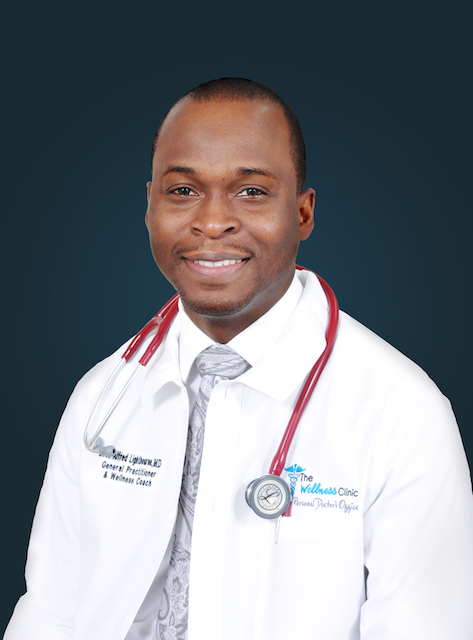Dr. Arlington Lightbourne used to get four or so calls a week from someone asking him to diagnose what’s wrong over the phone.
Today, he and his team in Central Eleuthera, Spanish Wells and Nassau are averaging that in a half day.
COVID-19 may be doing for telemedicine what all the attempts at persuading people to pick up a cell or tablet and dial a doctor could not – fast-tracking the case for telehealth, the practice of diagnosing much of what patients flock to a doctor’s office for without them ever having to leave their home or office.
“At least half the cases can be diagnosed by telemedicine and you can cut your office visits in half if you have a robust telemedicine platform,” said Dr. Lightbourne. From the patient’s point of view, that ‘platform’ is not complicated, though the physician’s office has to schedule efficiently and have instant access to patient records.
“Ideally, the physician should be able to see you through a visual aid such as video chat or FaceTime, take a proper history, review your records and any medications you may be on currently.

If the physician needs more than that or if from what is presented, the course of action is not immediately clear then the patient can make an appointment to come in,” says Dr, Lightbourne, a wellness specialist whose clinics in Eleuthera and Nassau posted special hours to maintain social distancing during the lockdown to control the spread of coronavirus when it was first announced. Because the Nassau clinic has a relatively small waiting area, it opened by appointment only.
Eleuthera Medical Center in Palmetto Point which opened just over a year ago is far more spacious and was able to maintain scheduled appointments.
“We did not want people going to the doctor and taking a chance that they would be infected by someone sitting close to them who was asymptomatic,” he said. That’s when the phone calls started pouring in.
“Some 50-60% of the common issues presented in a doctor’s office can be addressed through telemedicine, especially if you have a population that is open to it. The problem is the Bahamian population is very traditional.
Just as they will stand in line at a bank, they will wait in a doctor’s office to make sure that they get a personal visit when technology exists to allow easier facilitation. At the very least, we can use telemedicine as a screening tool,” he noted.
“There are some cases where you have to examine the patient, no question, but with the increased use of readily available technology, someone who is feeling unwell only has to pick up a phone or other smart device or sit at a computer screen.
It will also save unnecessary visits to the emergency room and if a patient is diagnosed early because it is easier to do it from home and you are not putting off seeing the doctor, the chances of catching something earlier when it is more treatable successfully also increase.” Originally introduced as a way to diagnose and treat populations in remote places, telemedicine, also known as telehealth, has expanded worldwide.
According to the American Medical Association, it increased 53% between 2016 and 2017 – years ahead of the coronavirus pandemic.
“Even if it reduces one office visit an hour, it helps to eliminate crowding in doctors’ offices, put an end to long waits that people rightfully hate, especially if they are feeling unwell and it frees up medical personnel to dedicate themselves to those cases that require extreme in-person and emergency care.
The message I’d like people to remember is this: just because it is not in person does not mean it is impersonal.”





